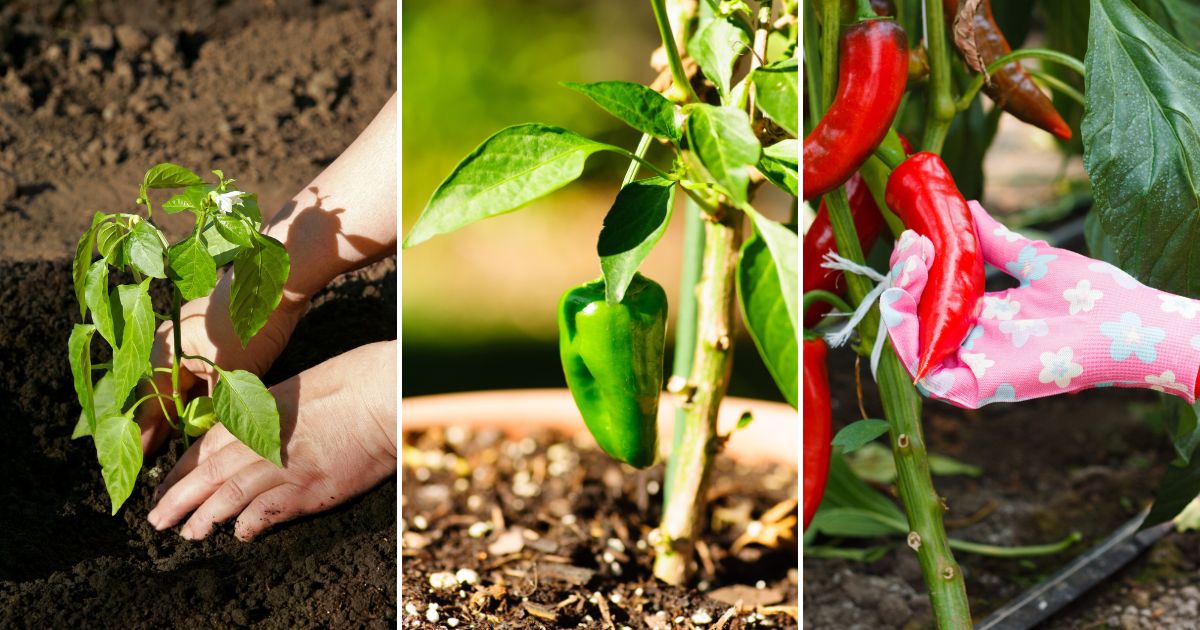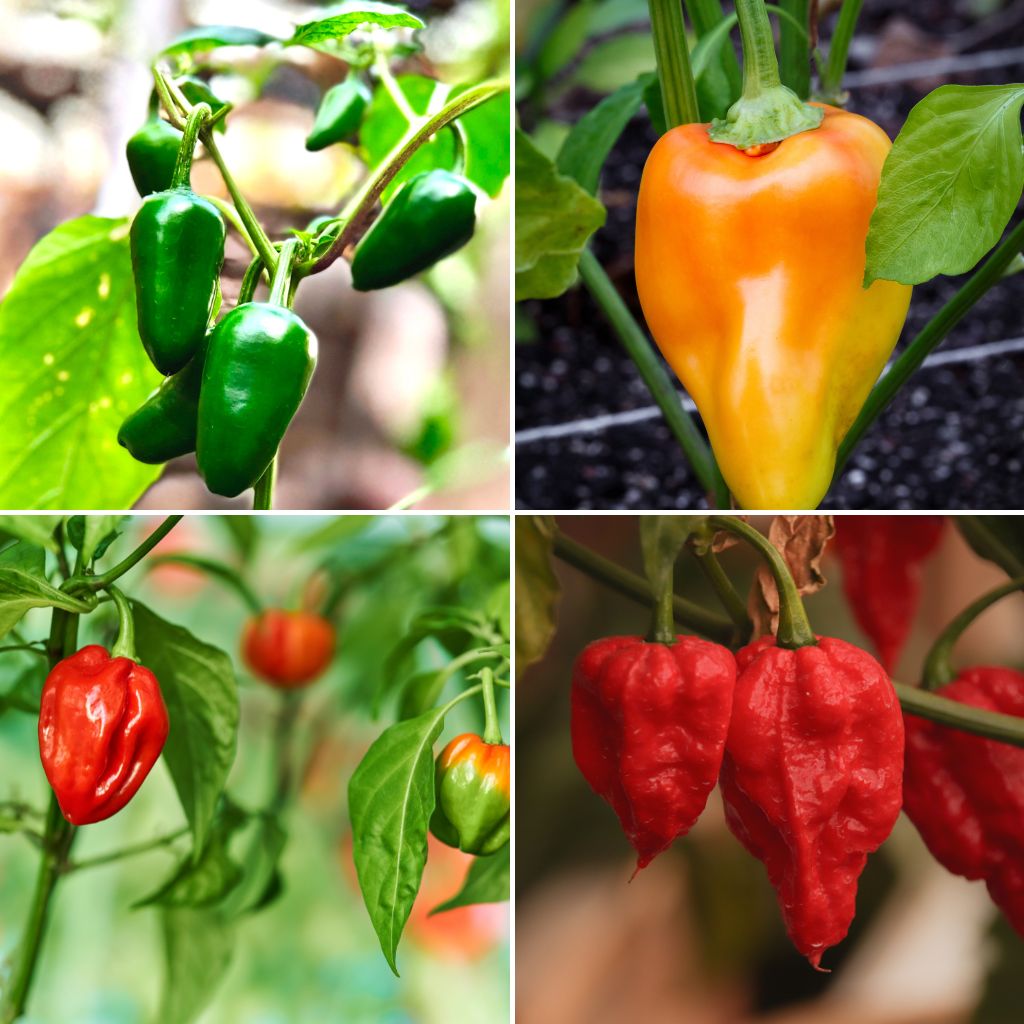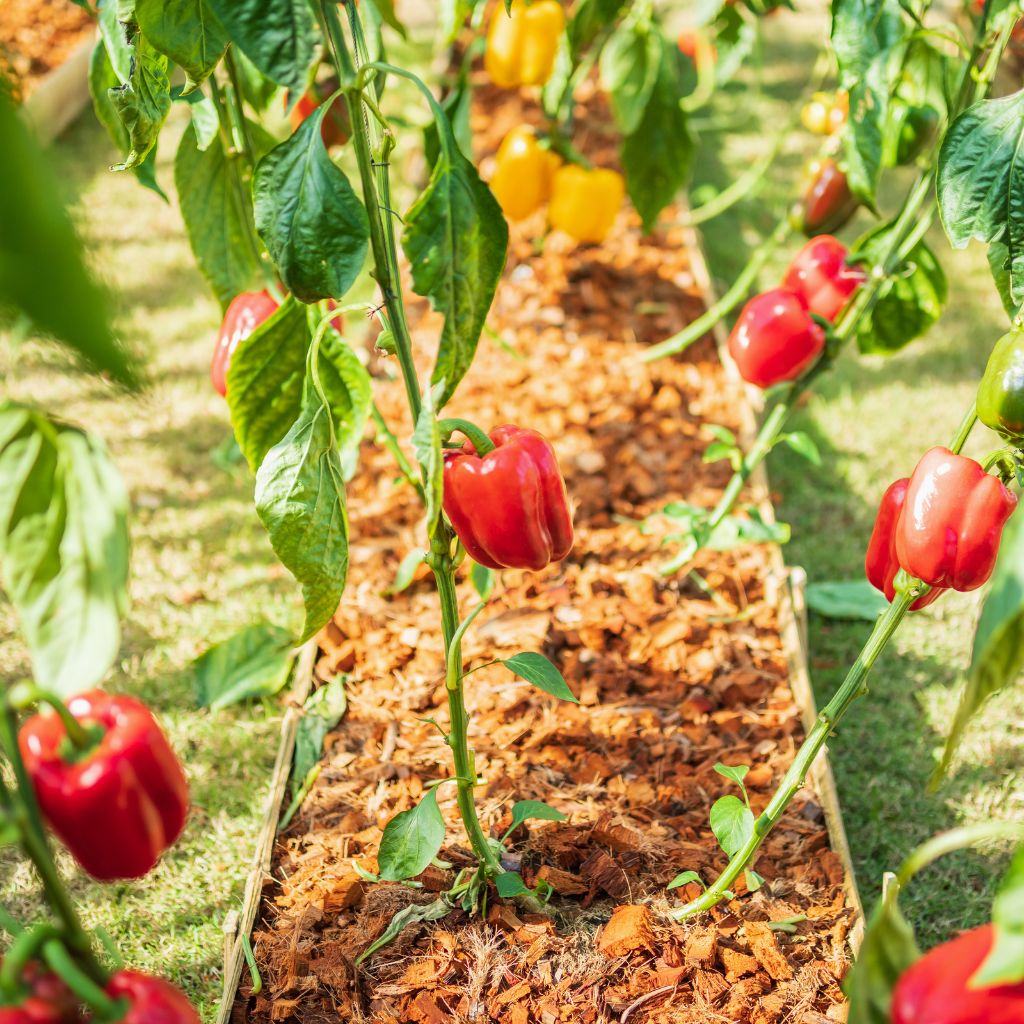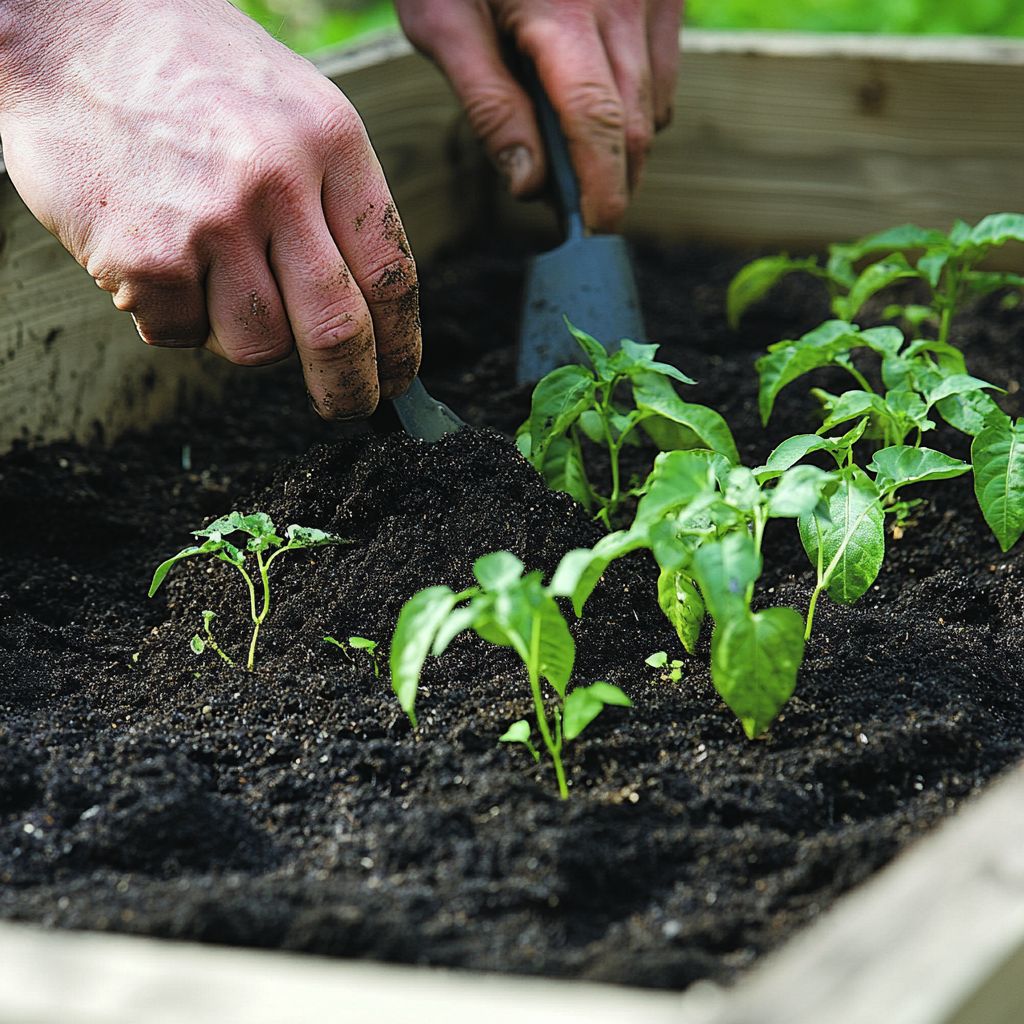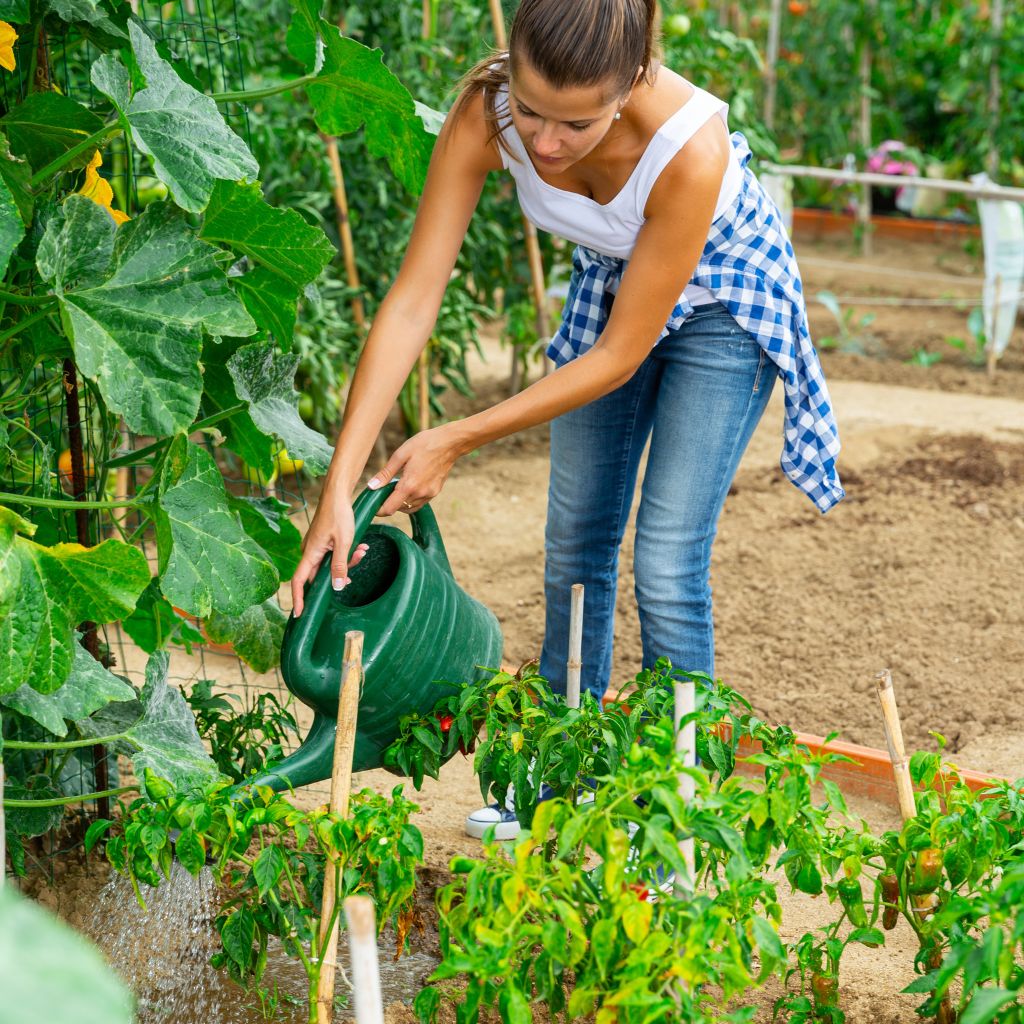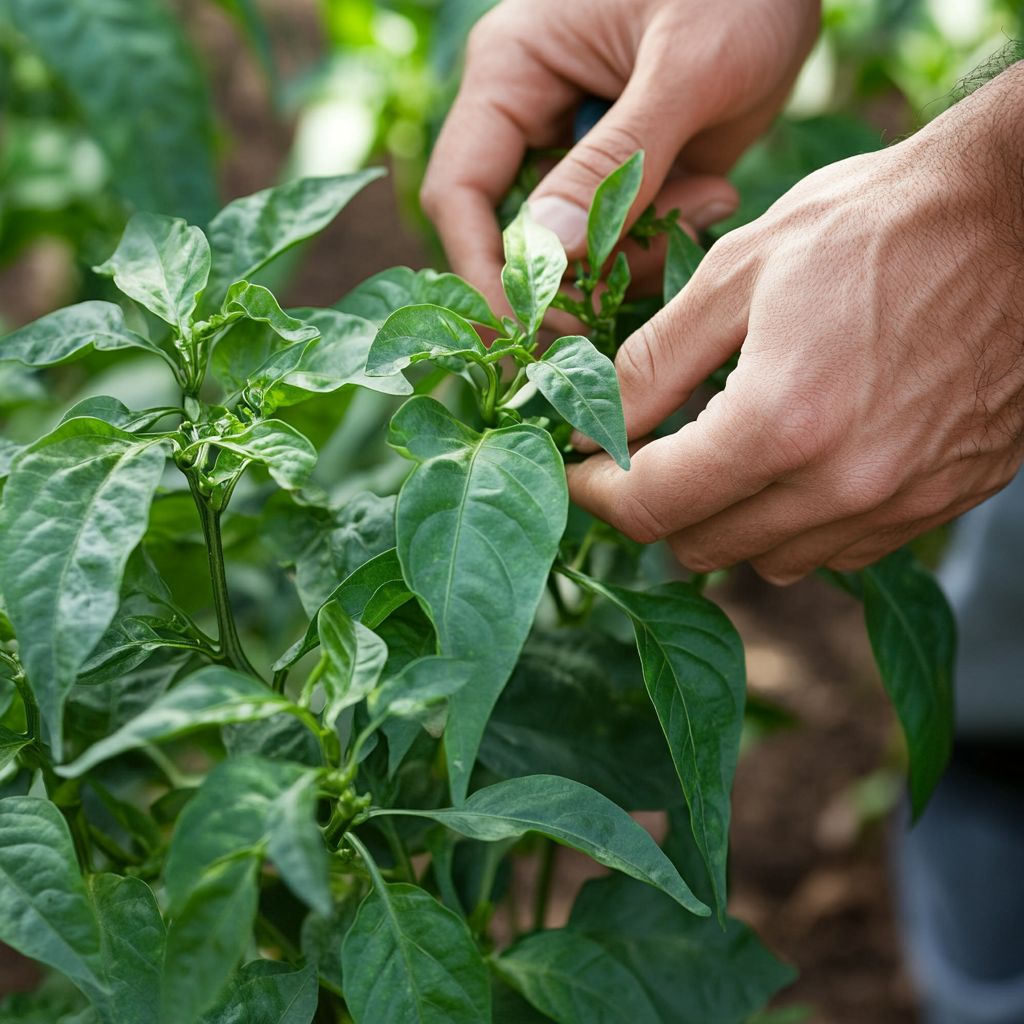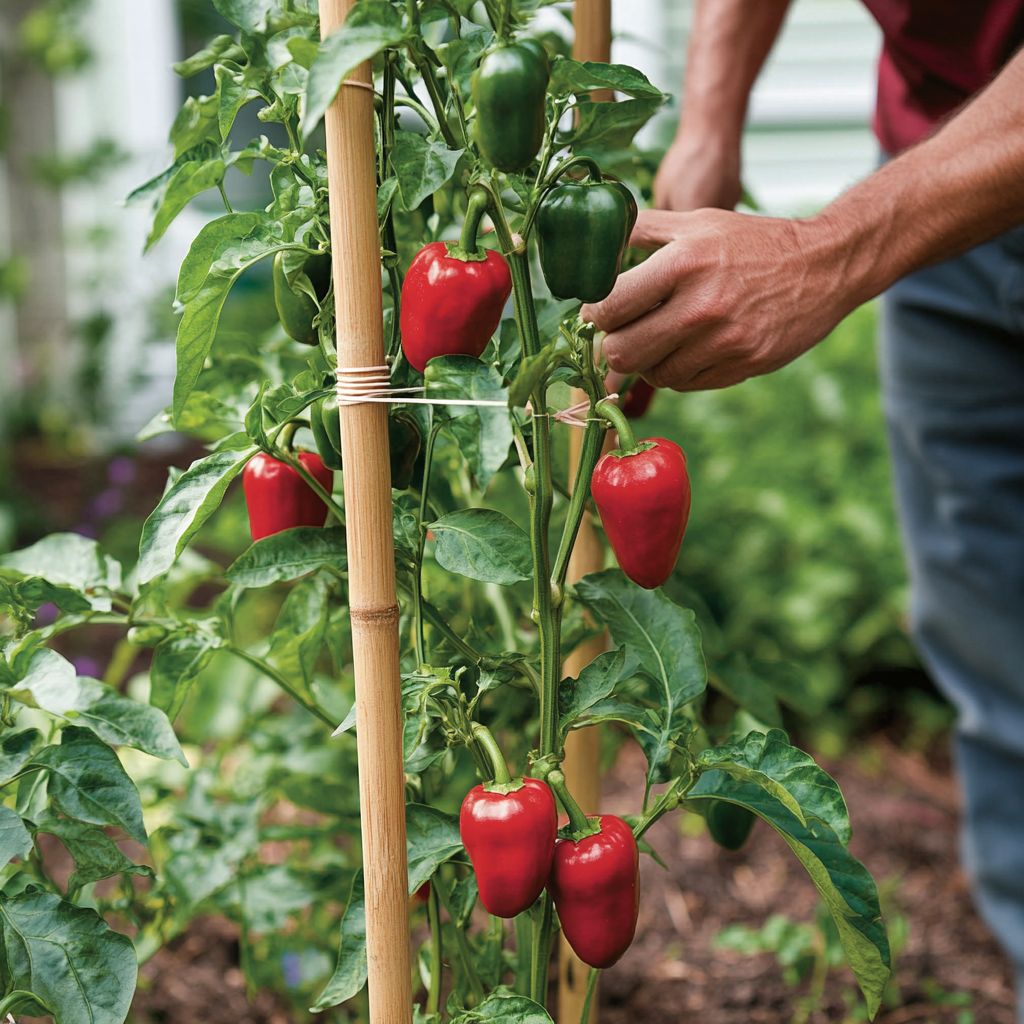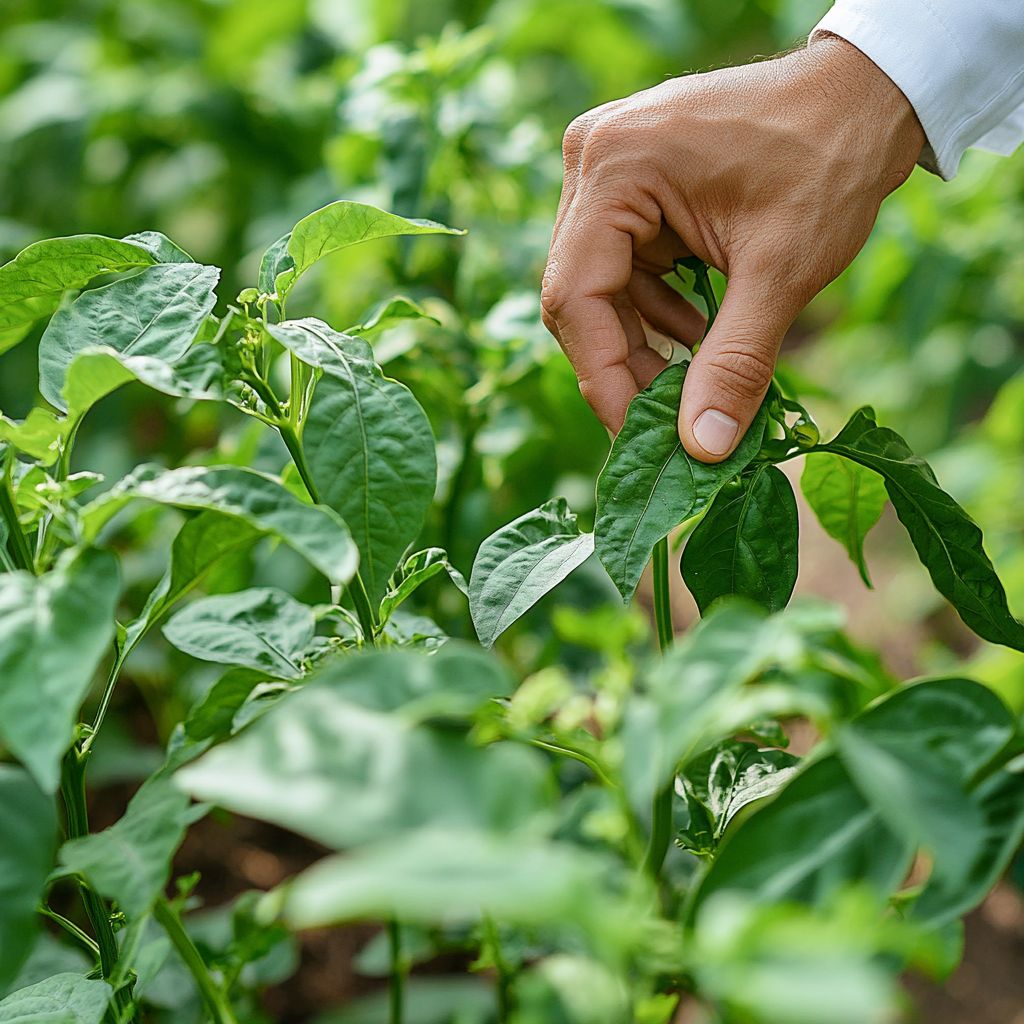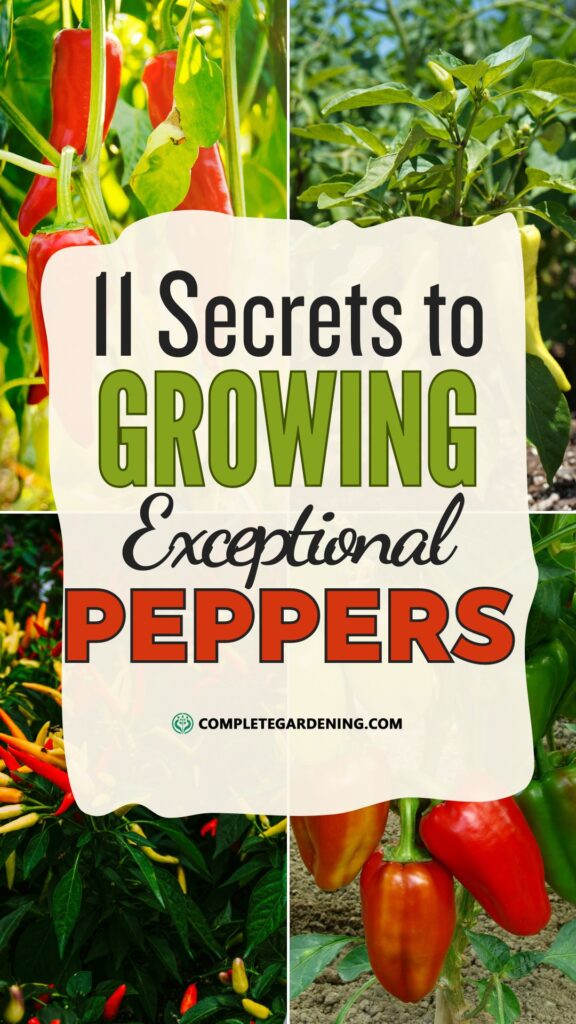Peppers are a vibrant and flavorful addition to any garden, offering a wide range of varieties from sweet bell peppers to fiery habaneros. However, growing exceptional peppers requires more than just planting seeds and hoping for the best.
Here are 11 secrets to help you cultivate a pepper patch that will produce a bountiful and delicious harvest.
1. Start with the Right Varieties
Choosing the right pepper varieties for your garden is the first step toward success. Consider your local climate and growing conditions when selecting varieties.
For instance, if you live in a cooler climate, choose varieties that mature quickly, such as ‘Early Jalapeño’ or ‘Gypsy.’ If you’re in a warmer region, you can grow heat-loving varieties like ‘Habanero’ or ‘Ghost Pepper.’
2. Germinate Seeds with Care
Pepper seeds can be notoriously slow to germinate, but you can speed up the process with a simple trick. Place your seeds between damp paper towels, then seal them in a plastic bag and store them in a warm spot, like on top of your refrigerator.
Once the seeds sprout, carefully transplant them into pots. This method ensures a higher germination rate and gives your peppers a strong start.
3. Provide Optimal Growing Conditions
Peppers thrive in warm weather, with ideal temperatures ranging from 70°F to 85°F (21°C to 29°C) during the day and no lower than 55°F (13°C) at night.
They also require at least 6-8 hours of direct sunlight daily. If you’re growing peppers in a cooler climate, consider using black plastic mulch to warm the soil and extend your growing season.
4. Use High-Quality Soil
Peppers are sensitive to soil quality, so start with a well-draining, nutrient-rich soil mix. Incorporate organic matter such as compost or well-rotted manure to boost fertility.
Peppers prefer slightly acidic to neutral soil with a pH between 6.0 and 7.0. Regularly test your soil and adjust the pH as needed to maintain optimal growing conditions.
5. Fertilize Wisely
Peppers benefit from a balanced fertilizer regimen, but timing is key. Start with a nitrogen-rich fertilizer to encourage healthy leaf growth. Once the plants start flowering, switch to a fertilizer higher in phosphorus and potassium to promote fruit development.
Avoid over-fertilizing with nitrogen once the plants start setting fruit, as this can lead to lush foliage but fewer peppers.
6. Water Consistently and Correctly
Peppers need consistent moisture to thrive, but overwatering can lead to root rot and other issues. Water deeply once or twice a week, allowing the soil to dry slightly between waterings.
Aim to water at the base of the plants, avoiding the leaves to reduce the risk of disease. Mulching around the plants can help retain moisture and regulate soil temperature.
7. Prune and Pinch for Better Growth
Pruning your pepper plants can lead to a more bountiful harvest. Pinch off the first few flower buds that appear to encourage the plant to put more energy into growing strong roots and foliage.
You can also prune any leggy branches to promote a bushier, more productive plant. Pruning also improves air circulation, reducing the risk of disease.
8. Support Your Plants
As your pepper plants grow and begin to produce fruit, they can become top-heavy and prone to breaking, especially in windy conditions. Use stakes, cages, or even bamboo poles to support the plants.
This not only prevents damage but also helps the plant focus its energy on fruit production rather than repairing broken stems.
9. Implement Companion Planting
Companion planting can naturally enhance pepper growth and protect your plants from pests. Basil and marigolds are great companions for peppers, as they help repel harmful insects.
Additionally, planting peppers alongside onions or carrots can improve soil health and deter pests like aphids. Avoid planting peppers near beans or kohlrabi, which can stunt their growth.
10. Watch Out for Pests and Diseases
Peppers can be susceptible to pests such as aphids, spider mites, and cutworms, as well as diseases like blight and mosaic virus. Regularly inspect your plants for signs of trouble, and take immediate action if you notice anything amiss.
Use organic pesticides, neem oil, or insecticidal soap to manage pests. To prevent disease, ensure proper spacing between plants for good air circulation, and avoid overhead watering.
11. Harvest at the Right Time
Knowing when to harvest your peppers is crucial for flavor and yield. Most peppers can be harvested when they reach a usable size, but leaving them on the plant until they fully ripen will enhance their flavor.
For example, bell peppers start green but turn red, orange, or yellow as they mature, becoming sweeter. Regularly harvesting peppers encourages the plant to produce more fruit, extending your harvest season.
Bonus Tips for Exceptional Peppers
Epsom Salt for Magnesium Boost: Sprinkle Epsom salt around your pepper plants once a month to provide magnesium, which aids in photosynthesis and improves fruit production.
Overwintering Peppers: In colder climates, consider bringing your pepper plants indoors for the winter. Trim them back and place them in a sunny, warm spot to keep them alive until the next growing season.
Sunscald Prevention: In very hot climates, peppers can suffer from sunscald, which causes pale, soft spots on the fruit. Provide some shade during the hottest part of the day using shade cloth or by planting taller crops nearby.
Growing exceptional peppers takes some patience and attention to detail, but the rewards are well worth the effort.
By selecting the right varieties, providing ideal growing conditions, and following these secrets, you can enjoy a bountiful harvest of peppers bursting with flavor and color.
Whether you’re a fan of sweet bells or fiery chiles, these tips will help you cultivate a garden full of exceptional peppers that will make your taste buds sing.
